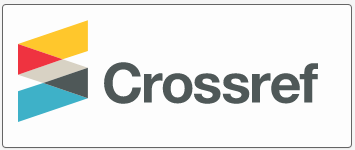For the symbolism and structure of blue colour in German language
DOI:
https://doi.org/10.52340/idw.2023.36Keywords:
color, blue, symbolism, structure, connotation, phraseologyAbstract
Colors have a different symbolic meaning in every culture. In this case, the aim of our research is to determine the semantic fields, symbolism and structure of the blue color. Blaue is translated into Georgian in two ways: blue and light blue. In German language, light blue is only used as a composite by adding the noun Himmel-sky - Himmelblau.
The object of the research is: German language dictionaries.
„blau- blue” is a word of Indo-Germanic origin and means “flashing”, “shining”. The color gamut is expanded by adding the adjectives “hell-light” “dunkel-dark”: hellblau-light blue, dunkelblau-dark blue. Colors are also specified with the help of the comparative conjunction wie-as: blau, wie das Meer sein-it is blue like the sea.
In phraseology, colors are associated with different semantic fields, emotions and properties. In German, blue is a symbol of water and sky. It is a symbol of the surreal world of peace, friendship, tranquility, relaxation, reliability and spirit.
In terms of structure, two-component composite nouns + blau adjective are most often encountered.
Himmelblau (Himmel-sky +blau-blue)-light blue.
Three-component composites were also observed( noun+noun +blau (adjective)).
Marienmantelblau- (Marien-Maria+Mantel-coat+blau-blue)- . The color of Mary's cloak.
We have also met adjective+adjective blau (two-components)
Ägyptischblau (Ägyptisch- Egyptian +blau-blue)_ Egyptian blue.
Adjective +noun+blau(adjective)(three-components): Blaubeerenblau- (blau-blue+Beeren-berry+blau-blue)-blueberrish.
Thus, in phraseology, blue expresses both positive and negative and neutral emotions. Although the color blue often carries more positive symbolism, 13 of the 51 phraseology we searched for had positive connotations. We encountered more (27 phraseology) with negative connotation and 11 - with neutral connotation.
Downloads
References
გამრეკელი, ნ., ჰოფმანი, თ., ქადაგიძე, ნ. (1973): გერმანულ-ქართულ-რუსული ფრაზეოლოგიური ლექსიკონი. თბილისი. განათლება.
ზექალაშვილი, რ. ქირია, ჭ. (2007): გერმანულ-ქართული ლექსიკონი. თბილისი: საქართველოს მაცნე.
Burger, H. 2010): Phraseologie: eine Einführung am Beispiel des Deutschen. 4., neu bearb. Aufl. Berlin:
Duden (Deutsches Universalwörterbuch) (5. überarbeitete Aufgabe) (2003). Dudenverlag. Mannheim. Leipzig. Wien. Zürich.
Duden (2008): Wörterbuch der deutschen Idiomatik. 3., überarbeitete und aktualisierte Aufl. Mannheim: Dudenverlag.
Fleischer, W.(1983): Deutsche Sprache (Kleine Enzyklopedie). VEB Bibliographisches Institut, Leipzig.
Fleischer, W.(1997): Phraseologie der deutschen Gegenwartssprache. 2. durchges. und ergänz. Aufl. Tübingen: Max Niemeyer.
Götz, D. u. a.:(2008) Droßwörterbuch Deutsch als Fremdsprache. Langenscheidt-Berlin- München -Wien -Zürich -New York.
Kempke, G. (1984):Handwörterbuch der deutschen Gegenwartssprache in zwei Bänden. Berlin: Akademie Verlag.
Schmidt, W. (1982): Deutsche Sprachkunde; Volk und Wissen, volkseigener Verlag. Berlin.
Paffen, K.A. (1980): Deutsch-russisches Satzlexikon. Leipzig: VEB Verlag Enzyklopädie.
Warig, G. (2000): Deutsches Wörterbuch. Bertelsmann Lrxikon Verlag. Gütersloh/ München







